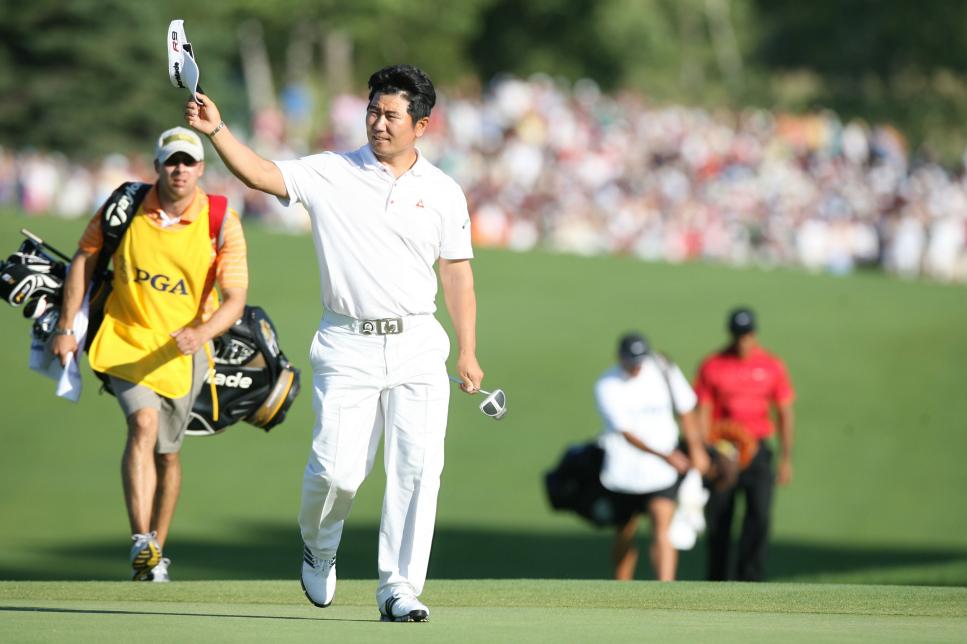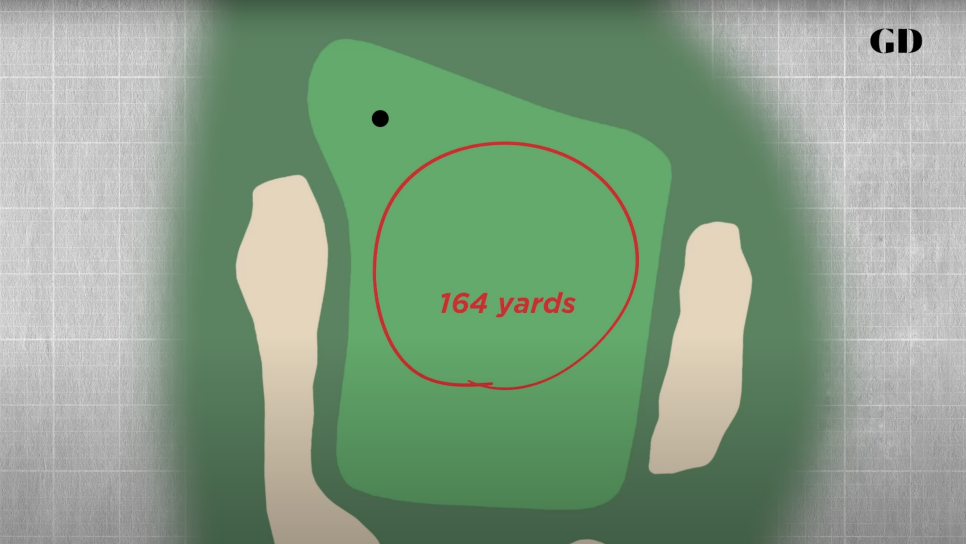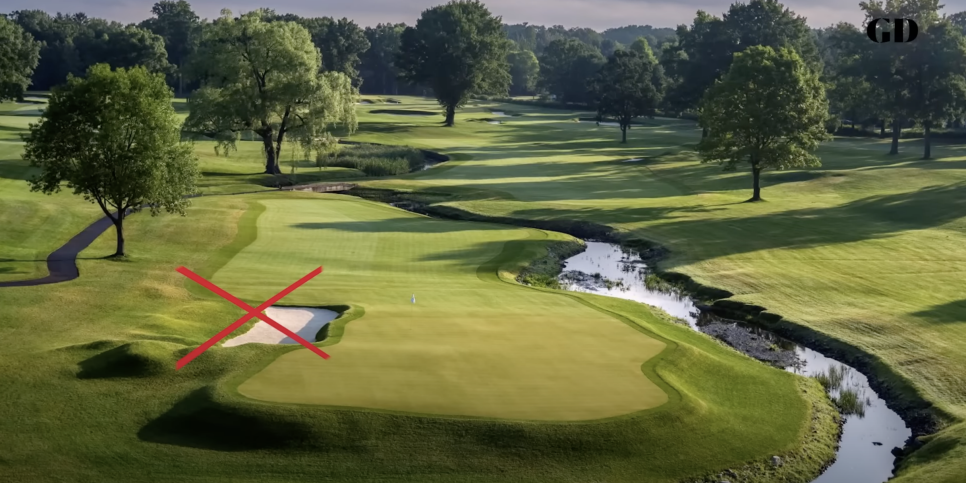At Oak Hill on July 1989, and something incredible happened.
Within two hours of each other, four different players each hit the same club on the same hole in the same tournament. And they each ended with the same score: A hole-in-one.
It was a mathematical miracle. Golf Digest pegged the odds of four golfers making a hole-in-one on the same course in a day at more than 330,000-to-1. But within two hours at the U.S. Open? A near-impossibility. It’s why it’s never happened before, or since.
But behind the bizarre circumstances of Oak Hill’s 6th hole on that day, was a strategy. A clever little tactic that the best players in golf use on every single hole they play. Look closely, and you’ll be able to see it. It’s a strategy built on safety, smarts, and statistics.
The events of Oak Hill’s 6th hole that day in 1989 may have been unlikely, but they weren’t by mistake. It was the happy result of a carefully-crafted gameplan.
Watch the full video below.
When we think of standard greens often golfers think about symmetrical ovals, but the interesting thing about great golf courses — is how asymmetrical the greens are. Oak Hill’s greens have all these little bulges, and sharp corners. During the tournament, usually on Saturday or Sunday, the pin will be placed in one of these bulges.
And that creates a problem.
You’ve probably heard the phrase “short side miss” at some point. It’s when a player’s shot misses the green on the side closest to the hole.
On television, a short side miss may not look that bad because the ball appears closer to the hole. But what makes them such a killer is the tiny amount of green between them and the hole. There’s almost none to work with, and no margin for error. It means players’ only option is to try to hit a finicky high shot, usually from an unpredictable lie in the rough, to try to get the ball to stop quickly. Even good shots tend to roll out close to 20 feet, and end with missed par putts.
When players do miss on the short side, it’s usually by a mistake. Some combination of a mental error, a double cross, or a recovery shot gone wrong.
That’s actually what happened the first Tiger Woods ever blew a 54-hole lead in a major. During the final round of the 2009 PGA, on the 12th hole on Sunday, Tiger’s 6-iron recovery shot ran through the green, into the short side. He made a bogey, and gave Y.E. Yang his first taste of the lead.

Icon Sports Wire
Columbia Professor Dr. Mark Broadie, the godfather of golf analytics, has actually studied this so deeply he created a new, very nerdy statistic for it called the “short-sided index”.
This measures how often players get up-and-down from various locations around the green. And he found that players average about half a stroke more when they miss on the short side of the green, compared to on the long side of the green. He says missing on the short side is like hitting your ball into an “invisible hazard”.
Miss on the short side just twice a round, and you’ve lost almost a stroke. Do it once more after that, and you’re not far from losing another one. Making that short-side mistake is one of the quickest ways to bleed strokes, and so pros build entire gameplans around avoiding the short side.
When the pin and the short side are long left, you’ll often see pros shift their target down and to the right.
When the pin and short side is front right, they’ll aim longer and more left.
In many ways anti short-side miss plan is a defensive strategy. But it’s something that sticks even when pros are ready to go on offense. When they start getting more aggrersive, you’ll often see them attack along slopes, rather than using direct lines at the pin. They’ll work a draw into the green so it falls down a right-to-left slope, or they’ll land one long, and try to spin it down a slope back towards the pin.

Tiger Woods and Nick Faldo were two of the best tacticians in golf history, and Tiger’s rare 2009 mistake aside, were two masters at avoiding the short side. That’s how Tiger came up with his nine windows theory. They learned to work the ball from out-to-in, always moving from safety, to danger. The closest their ball ever got to the short side was at the very end of its journey.
Which brings us back to that historic, four hole-in-one day at Oak Hill in 1989. The pin that day was in a bulge at the very front of the green. The short side miss was in front of the green, where there was also water and a nasty bunker. So, all four players took an extra club, a 7-iron, and they each sent their shots long of the pin. More than 20 feet long, in Nick Price’s case. And they each watched their ball come back down the slope, and into the hole.
''There won't be any more holes-in-one there. We’re going to plant a tree there,” said one USGA official afterwards.
They didn’t plant a tree, but a few decades later, Oak Hill did blow up the hole, and completely redesigned it. The par-3 6th hole is now a long, snaking par-4 that ranks as the hardest hole on the course. There won’t be any more holes in one anymore.
Defend against the short side. Pros know it’s the best way to avoid disaster. And then, every now and again, something magical may even happen.
You can watch the full video below:
